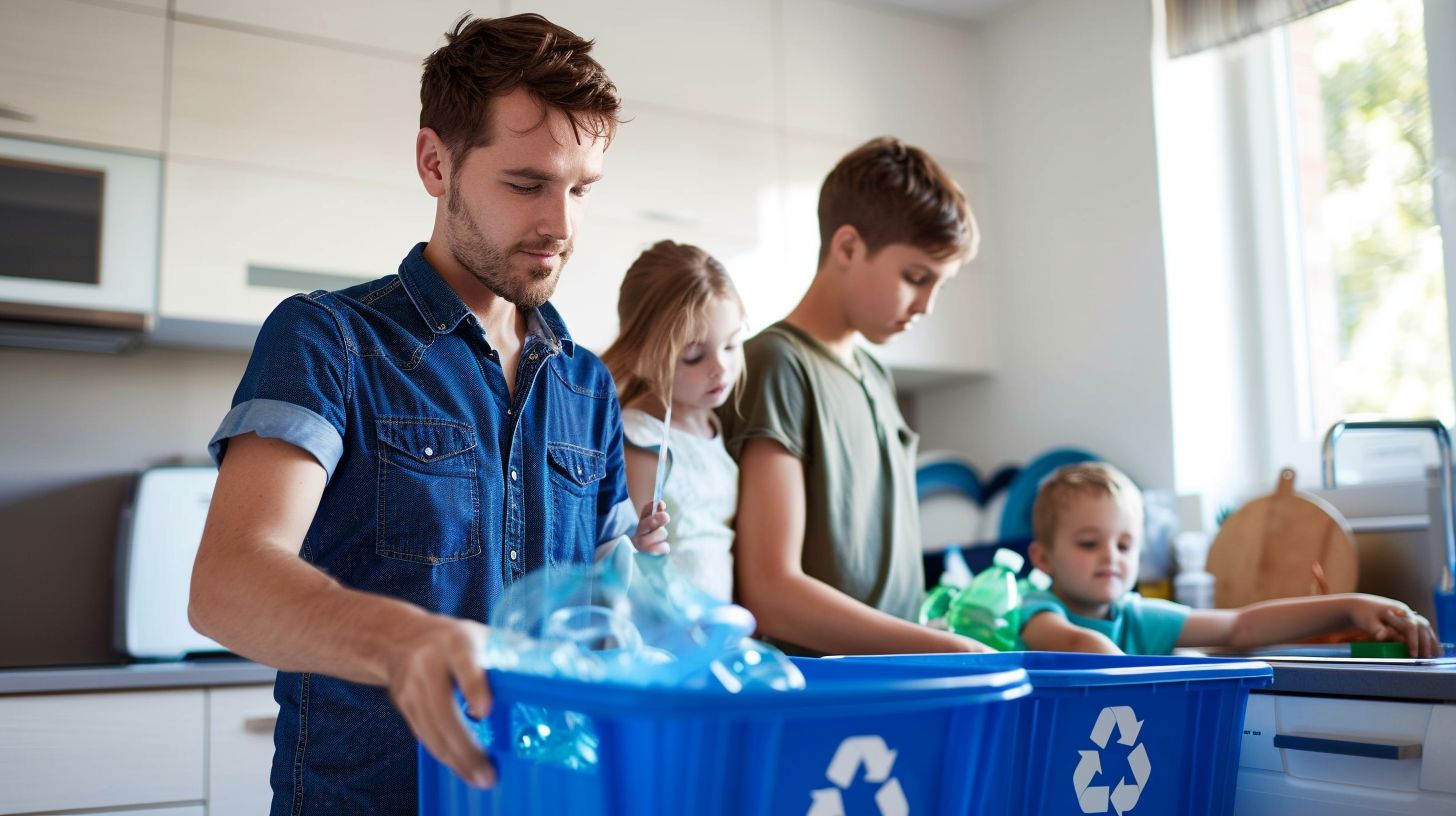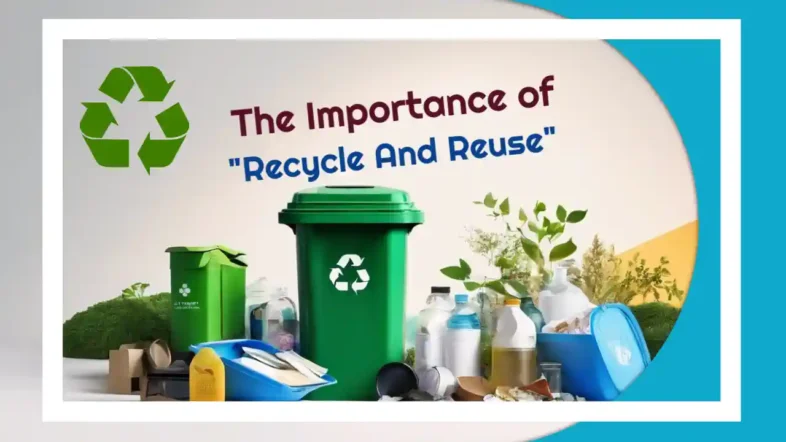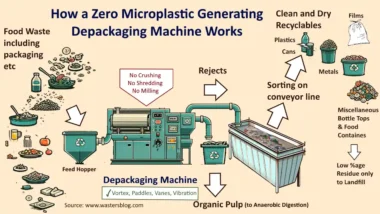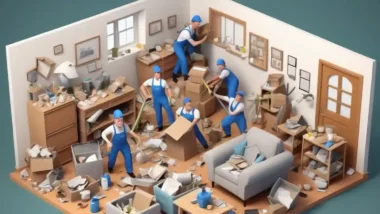Every day, our planet is swamped with rubbish that could otherwise be reused or recycled. Did you know that by simply reusing an item, we can save energy and reduce the strain on our natural resources? This guide will show you practical ways to make a big difference in waste management through recycling and reusing.
Keep reading; it's easier than you think!
Key Takeaways
- Reusing items saves energy and materials, reducing the need for new production. For example, Clearance Solutions saved over 2,500 tonnes of CO2 with furniture rehoming.
- Recycling helps conserve natural resources but creates some pollution. To reduce this impact, use local facilities and clean recyclables properly.
- Practical steps like donating old clothes, using reusable bags, and composting can cut down on waste in daily life.
- Buying less and choosing long-lasting products leads to less waste. Sharing tools with neighbours also cuts down on consumption.
- Fixing broken objects instead of buying new ones and choosing products with minimal packaging help reduce landfill waste.
The Three Rs: Reduce, Reuse and Recycle
Understanding the difference between reuse and recycling is crucial to sustainable waste management. Each of these practices plays a vital role in reducing our impact on the environment.

Understanding the difference between reuse and recycling
Reuse means taking something and using it again without changing it. For example, carrying groceries in the same bag many times is reusing. This keeps items out of waste streams for longer and cuts down on new material needed.
Recycling involves breaking down used items to make raw materials for making new things. It turns old products into different ones, like plastic bottles becoming park benches or clothing.
This process needs energy but helps reduce the need for fresh resources.
The Importance of Reusing
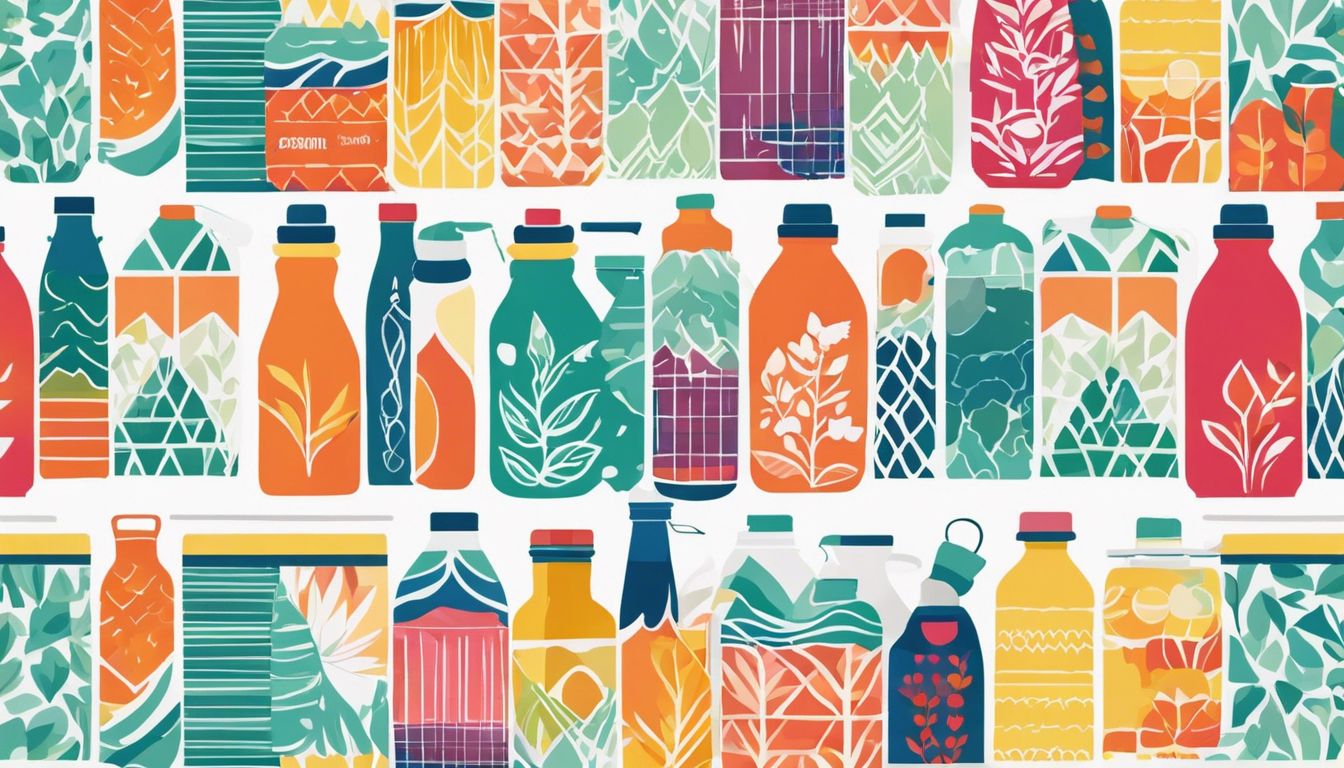
Reusing items can save energy and materials, reducing the need for new production and ultimately benefiting the environment. If you want to learn more about the importance of reusing in waste management, keep reading!

How reusing items can save energy and materials
Reusing items instead of throwing them away cuts down on energy and material use. It extends the life of products, which means less stuff needs to be made from scratch. Making things from new materials can use a lot of energy and resources.
For example, making paper from fresh wood uses more water and energy than using recycled paper.
Choosing to reuse helps fight pollution too. Less waste goes into landfills, so harmful chemicals don't leak into the earth or air. Companies like Clearance Solutions have shown that reusing can make a big difference by saving over 2,500 tonnes of CO2 with their furniture rehoming efforts.
This shows us that keeping things in circulation is good for our planet and us.
The Role of Recycling in Waste Management
Recycling plays a crucial role in waste management by reducing the amount of waste that ends up in landfills and incinerators. It also helps to conserve natural resources and reduce pollution caused by the extraction and processing of raw materials.

Addressing the waste and pollution produced by recycling
Recycling is not perfect. It creates waste and pollution from the energy used in collecting, sorting, and processing materials. Trucks transport recyclables, which adds to greenhouse gas emissions.
Recycling centres also use a lot of power to turn old items into new ones.
We must be careful with recycling. Choose local facilities to cut down on transport pollution. Use less energy by recycling materials that don't need much power to process. Always clean your recyclables so they won't contaminate the other items at the facility.
This helps make recycling more effective and eco-friendly.
Practical Ways to Implement Reuse and Recycling
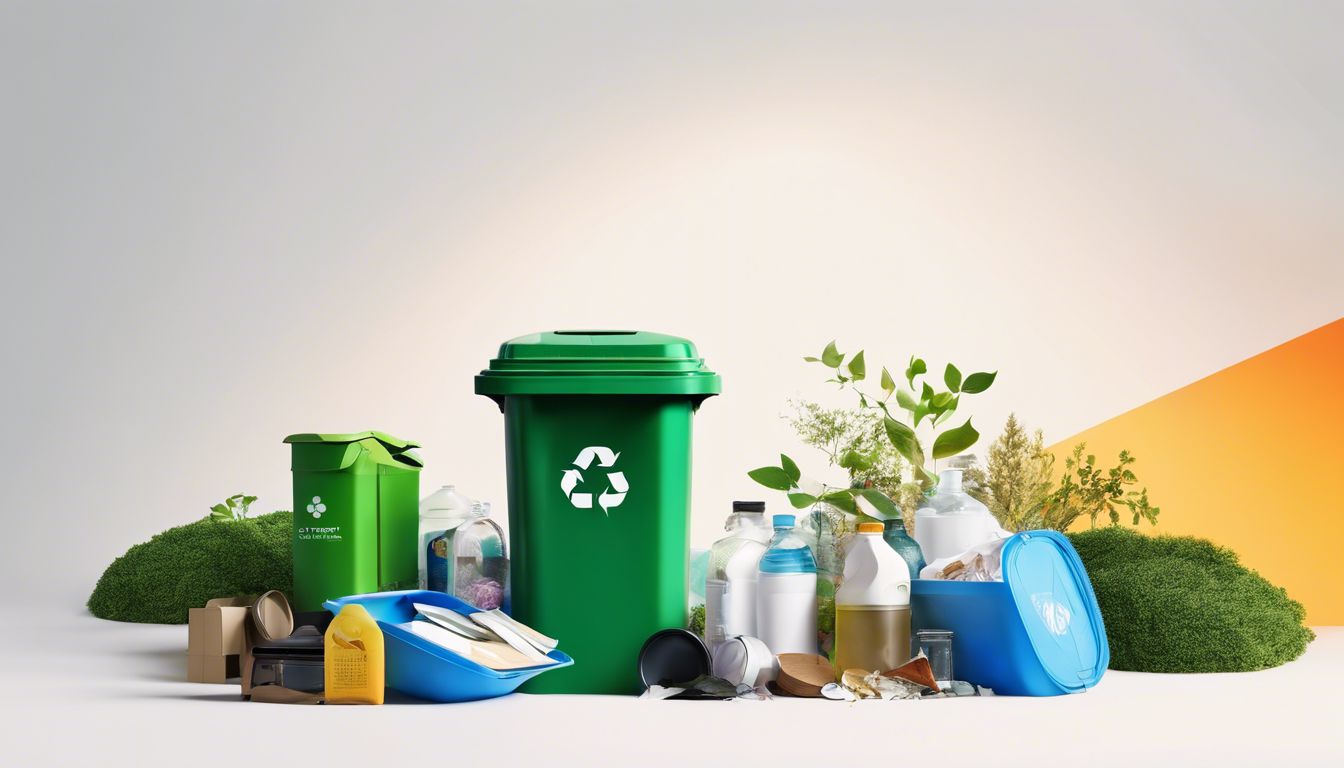
Putting reuse and recycling into practice helps the environment. It can also be simple and fun to do at home or work. Here are some practical ways:
- Learn what items your local recycling service accepts. Check their website or give them a call.
- Set up different bins for plastics, paper, glass, and metals in your home. Label each bin so everyone knows where to put things.
- Take reusable bags to the shop instead of getting new plastic ones. Keep some in your car or by the door so you don't forget.
- Donate clothes and toys you don't use to charity shops. Someone else might love what you no longer need.
- Repair broken items instead of throwing them away. You could fix a chair, sew up torn clothes, or glue a toy back together.
- Buy second-hand goods from thrift stores or online marketplaces. You'll save money and reduce waste at the same time.
- Choose products with less packaging when you're shopping. Look for items without plastic wrappers or too many boxes.
- Start composting kitchen waste like fruit peels and coffee grounds. Your garden will love the natural fertiliser it makes.
- Drink from a reusable water bottle rather than buying disposable ones. Fill it up at home or use public water fountains when out.
- Create an ‘upcycling' project at home. Turn scraps of fabric into a quilt or old jars into vases for fresh flowers.
The Bigger Picture: Reducing Consumption
Reducing consumption is a key step towards sustainable living. It goes beyond recycling and reusing by cutting back on the amount of stuff we buy. This helps slow down the production of new materials, which can save energy and resources.
People are buying less and choosing durable items that last longer. They're also sharing tools with neighbours instead of each person buying their own.
Using less means throwing away less, leading to smaller piles of waste in landfills. Many people now fix broken objects rather than tossing them out for new ones. Shops sell upcycled products made from old items given a second life.
Consumers are more aware and buy products with minimal packaging or none at all, like bulk foods or reusable containers.
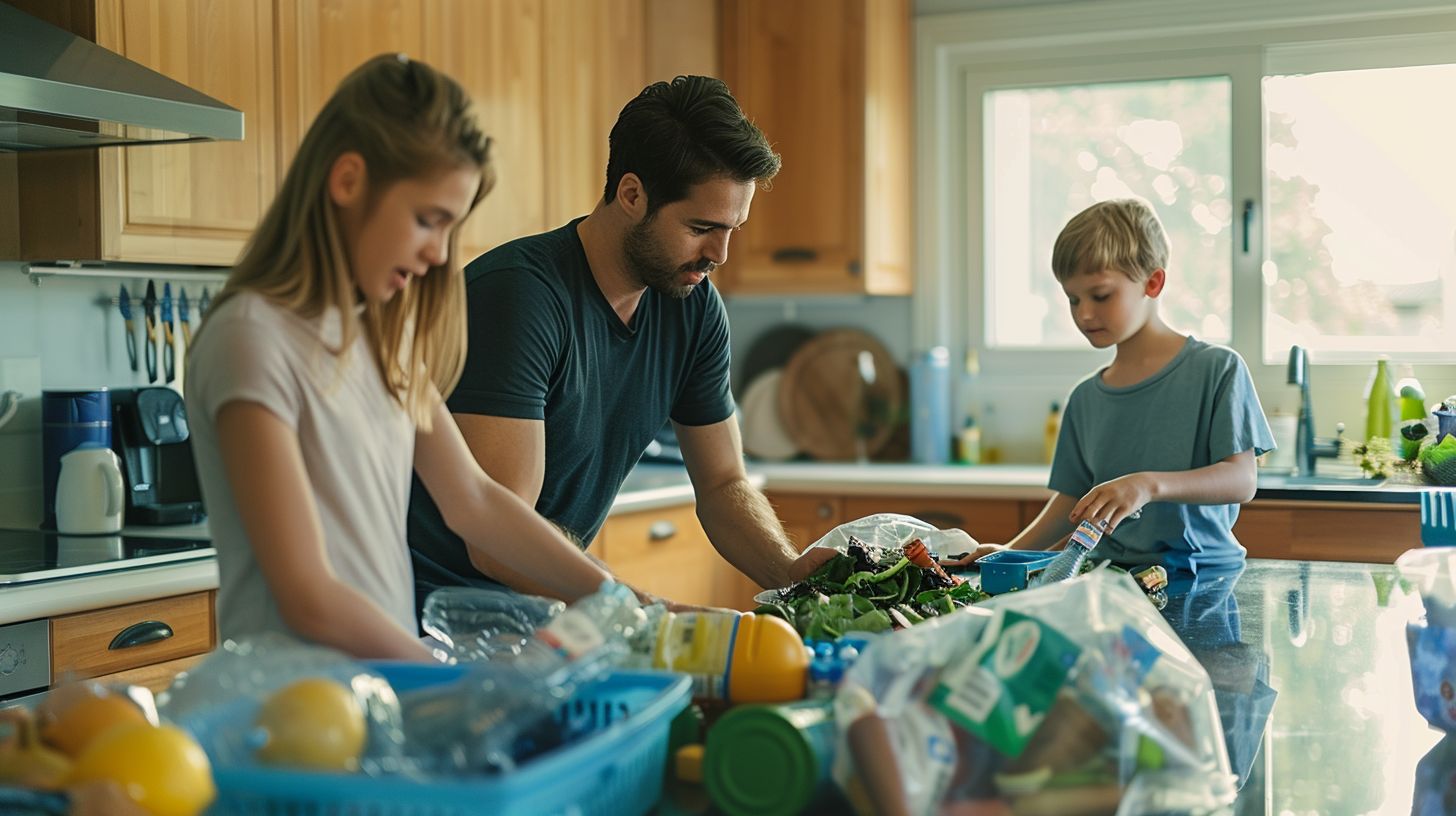
Conclusion
Recycle and reuse keep our planet healthy by managing waste better. Taking action in our daily lives can make a big difference. We help save energy, cut down on pollution, and protect natural resources.
Choosing to recycle and reuse is a step towards a sustainable future for everyone. Let's all do our part in this important task.
FAQs
1. What does ‘reduce, reuse, recycle' mean for waste management?
‘Reduce, reuse, recycle' are steps to manage waste by using less, giving items more than one life, and turning rubbish into new things. This helps us live a sustainable lifestyle.
2. Why is it important to reuse things like carrier bags and water bottles?
Reusing stuff like carrier bags and water bottles stops waste build-up and saves energy. It cuts down on single-use plastics which pollute our planet.
3. How does recycling help the environment?
Recycling turns old materials into new ones without needing raw resources. It reduces energy consumption and prevents useful items from becoming rubbish.
4. Can everything be recycled?
No, not all can be recycled due to different reasons such as contamination or lack of proper infrastructure but many common items like paper, glass, and metal cans can go in your kerbside collection for recycling.
5. What are recyclable materials I should know about?
Look for packaging symbols on products; many will show if they're recyclable or made from post-consumer recycled content. That's good news!
6. How do we make sure items get properly reused or recycled?
Educate yourself on local recycling rules or the web for information on how to dispose of various types of solid waste correctly including household hazardous wastes.
